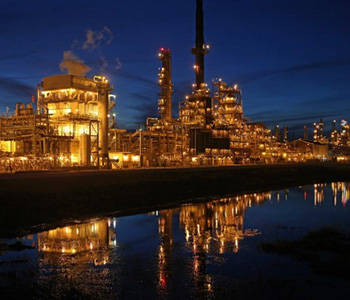Refinery Turnarounds - What is That?
May 13, 2025

Article written by Adam Lovgren, Energy Refined Fuels & Operations Manager'
Refinery Turnarounds – What is that?
Refineries operate 24/7, 365 days a year, processing massive volumes of crude oil into the fuels and products that power economies and daily life. But have you ever wondered how these complex facilities maintain such relentless performance without constant breakdowns?
The answer lies in refinery turnarounds—also known as planned shutdowns. These are carefully scheduled maintenance events that temporarily halt production to allow for deep inspections, equipment upgrades, and rigorous safety checks.
Though turnarounds require substantial time, labor, and financial investment, they are essential to the long-term health and performance of a refinery. Properly executed, they help:
A Critical Pause in a Non-Stop Industry
The oil and gas industry never sleeps. From upstream extraction to downstream refining and final delivery to consumers, operations must run continuously to meet global demand. But even the most advanced machinery and systems need periodic downtime—and that’s where refinery turnarounds come in.
Unlike brief shutdowns caused by unforeseen issues, turnarounds are comprehensive, planned maintenance events that can last several weeks or even months. Over the years, these shutdowns have evolved into strategic operations, critical for ensuring safety, efficiency, and regulatory compliance.
Inside the Turnaround Lifecycle
A successful turnaround follows a structured, multi-phase process:
1. Pre-Turnaround Planning
✅ Why Turnarounds Matter
Operational Reliability
Prevents unplanned outages and extends equipment lifespan through proactive care.
Regulatory Compliance
Ensures systems meet evolving local, national, and international safety and environmental standards.
Sustainability
Supports emission reductions, responsible waste management, and circular economy initiatives.
Cost Control
Reduces emergency repair needs and protects capital investment in infrastructure.
Driving Efficiency and Environmental Stewardship
Turnarounds are more than maintenance—they’re opportunities for transformation. By upgrading systems during this time, refineries can:
Minimizing Risk, Maximizing Uptime
Routine maintenance during turnarounds helps prevent premature failures that could disrupt operations and endanger personnel. By staying ahead of potential issues and maintaining compliance with stringent regulations, refineries avoid:
Final Thought
In a high-stakes industry where uptime is everything, refinery turnarounds prove that strategic downtime is the key to long-term uptime. These meticulously planned shutdowns protect not only assets and output, but also the people, communities, and environments around them.
In the relentless rhythm of oil and gas, turnarounds are the deliberate pause that keeps the whole system moving forward.
Refinery Turnarounds – What is that?
Refineries operate 24/7, 365 days a year, processing massive volumes of crude oil into the fuels and products that power economies and daily life. But have you ever wondered how these complex facilities maintain such relentless performance without constant breakdowns?
The answer lies in refinery turnarounds—also known as planned shutdowns. These are carefully scheduled maintenance events that temporarily halt production to allow for deep inspections, equipment upgrades, and rigorous safety checks.
Though turnarounds require substantial time, labor, and financial investment, they are essential to the long-term health and performance of a refinery. Properly executed, they help:
- Prevent costly unplanned outages
- Ensure compliance with evolving regulations
- Extend the life of critical infrastructure
The oil and gas industry never sleeps. From upstream extraction to downstream refining and final delivery to consumers, operations must run continuously to meet global demand. But even the most advanced machinery and systems need periodic downtime—and that’s where refinery turnarounds come in.
Unlike brief shutdowns caused by unforeseen issues, turnarounds are comprehensive, planned maintenance events that can last several weeks or even months. Over the years, these shutdowns have evolved into strategic operations, critical for ensuring safety, efficiency, and regulatory compliance.
Inside the Turnaround Lifecycle
A successful turnaround follows a structured, multi-phase process:
1. Pre-Turnaround Planning
- Starts months or even years in advance
- Defines scope, timelines, budgets, and logistics
- Involves permitting, contractor hiring, and equipment procurement
- Entire plant or specific units are taken offline
- Systems are depressurized and cleaned for safe access
- Safety protocols are activated for worker protection
- High-wear components are inspected and replaced
- Aging systems are overhauled
- Environmental and performance upgrades are implemented
- Systems undergo integrity and safety testing
- Regulatory compliance checks are conducted before restart
- Operations resume gradually with continuous performance monitoring
- Final evaluations ensure systems are stable and ready for sustained performance
✅ Why Turnarounds Matter
Operational Reliability
Prevents unplanned outages and extends equipment lifespan through proactive care.
Regulatory Compliance
Ensures systems meet evolving local, national, and international safety and environmental standards.
Sustainability
Supports emission reductions, responsible waste management, and circular economy initiatives.
Cost Control
Reduces emergency repair needs and protects capital investment in infrastructure.
Turnarounds are more than maintenance—they’re opportunities for transformation. By upgrading systems during this time, refineries can:
- Reduce emissions and energy use
- Optimize fuel yields
- Improve water treatment and byproduct handling
Routine maintenance during turnarounds helps prevent premature failures that could disrupt operations and endanger personnel. By staying ahead of potential issues and maintaining compliance with stringent regulations, refineries avoid:
- Costly shutdowns
- Safety incidents
- Regulatory fines and legal risks
Final Thought
In a high-stakes industry where uptime is everything, refinery turnarounds prove that strategic downtime is the key to long-term uptime. These meticulously planned shutdowns protect not only assets and output, but also the people, communities, and environments around them.
In the relentless rhythm of oil and gas, turnarounds are the deliberate pause that keeps the whole system moving forward.